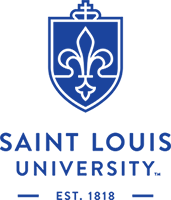It doesn't matter how interested they are in science and medicine. Until they enter college or medical school, most students aren't likely to get any closer to the inner workings of the human body than the brightly colored pictures in their anatomy textbooks.
However, as a teenager, Lori Roberts already was handling human cadavers to learn how the cardiovascular and nervous systems work. She took a guided "tour" of a human body, with physicians pointing out to her everything from gastrointestinal contents to nerve endings in the feet. She cut open a sheep's brain, and sat in a darkened auditorium wearing 3-D glasses as a lecturer dissected a human heart on the screen in front of her.
A recent medical school graduate, Roberts said these experiences gave her a invaluable head start over peers who didn't get any practical anatomy experience until they began their medical training.
But how did she get to do all this at such a young age?
Roberts is one of more than 100,000 students who have taken part in a one-of-a-kind community outreach program at Saint Louis University's Practical Anatomy Workshop. Called Adventures in Science and Medicine (AIMS), the program is the only one in the United States that gives middle and high school students an opportunity to participate in hands-on anatomy courses using human specimens.
"Put simply, AIMS gives kids a chance to put gloves on and handle hearts and brains and spinal cords," said Karen Montgomery, the AIMS Education Coordinator at Saint Louis University. "It's a lot of fun, not only for students who are already interested in science, but for everyone who comes here. It's an experience they can't get anywhere else."
Roberts said attending AIMS helped her decide what she wanted to do with her life.
"I come from a pretty rural high school, with just 180 people in our graduating class," she said. "There wasn't a lot of exposure to more advanced topics in biology -- so this played a pretty big role in my decision to become a doctor. It confirmed that this was what I wanted to do."
Regular offerings include a two-week summer workshop for high-school age students, as well as half-day courses for middle and high school students on subjects such as the human brain, the human heart, the bones and joints of the human body, organ transplants and many more. There also is a sports medicine and athletic training workshop that includes 3-D demonstrations of the shoulder, knee and ankle. In addition, students and teachers may attend a cadaver demonstration, which is a 1 1/2 hour tour of the human body. All AIMS programs are taught by volunteer physicians, medical students or graduate students in the sciences.
The program is not limited to teens and preteens. Montgomery said other participants include teachers looking to bone up on their own science skills by attending summer anatomy and physiology workshops.
The program recently began using distance learning to reach out to even more students than the 8,000 to 10,000 who attend each year. Students hundreds of miles away can follow along as an instructor dissects a sheep brain, mimicking the instructor's cuts with their own specimen via video conferencing technology.
"This is a way for us to reach more people," Montgomery said. "Each year we have groups of students visit from across the Midwest. We'd like as many students as possible to have access to these opportunities, no matter where they are in the country."
Applications and more information about AIMS are available at http://pawslab.slu.edu.
Saint Louis University is a Jesuit, Catholic university ranked among the top research institutions in the nation. The University fosters the intellectual and character development of 11,000 students on campuses in St. Louis and Madrid, Spain. Founded in 1818, it is the oldest university west of the Mississippi and the second oldest Jesuit university in the United States. Through teaching, research, health care and community service, Saint Louis University is the place where knowledge touches lives. Learn more about SLU at www.slu.edu.
